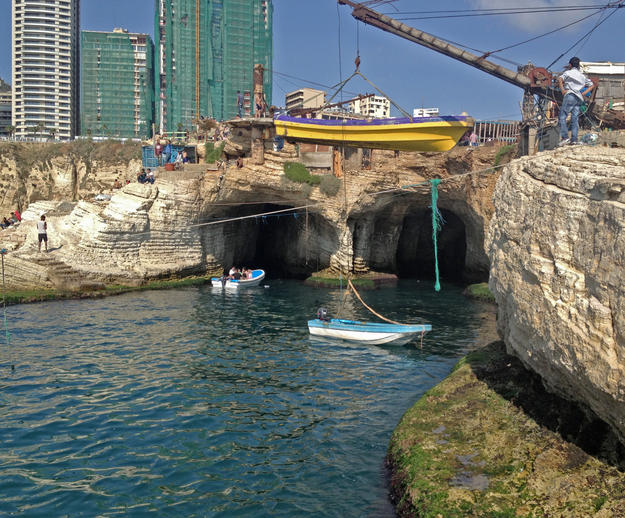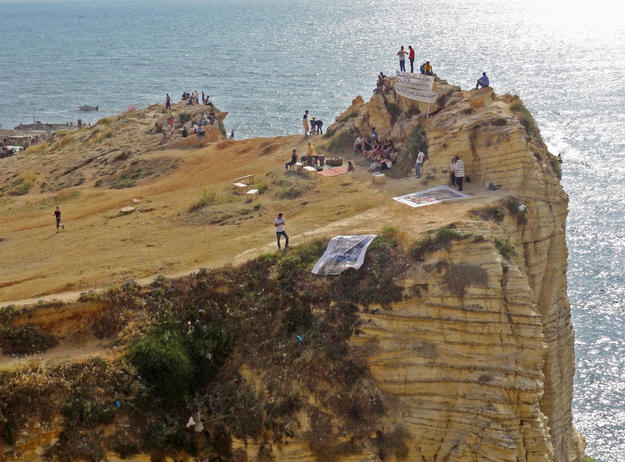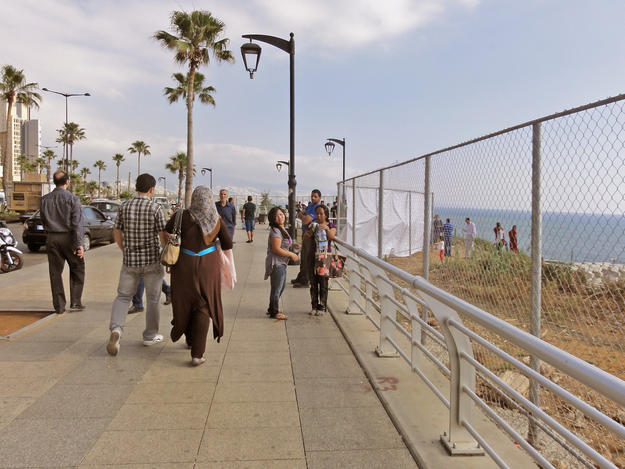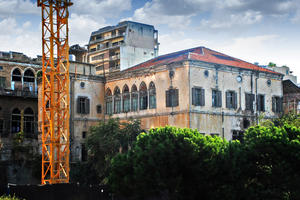Dalieh of Raouche
2016 World Monuments Watch
Beirut’s Dalieh, a prominent landmark on the main coastal promenade and a landscape of beauty, rich social history, and cultural memory, has been a feature of city life for more than 7,000 years. The Dalieh is part of the landscape of the iconic Raouche (the Pigeon Rocks), an icon of Beirut’s shoreline that appears in thousands of images of the city. The open rocky area along the sea shore has been used for hundreds of years by working-class families for everyday activities from swimming to religious festivals, as well as farming and fishing. The continuity of activity at the site is remarkable—excavations in the early twentieth century uncovered completely untouched stone tools and other artifacts dating from the Neolithic era. The area also has considerable natural interest, thanks to its complex shoreline ecosystem, fossil-bearing rocks, and plant life in a city with very little vegetation. Beirut has less than a square meter of green space per person, making it one of the least green cities in the world.
There has been a long tradition of public access to the Beirut shoreline, beginning under Ottoman rule and continuing through the French mandate with laws prohibiting development on the coast. But since the 1960s, a series of legal changes have removed most of the protection for the coastline, permitting almost unchecked development. This opportunity has been seized by major real estate investors, who have managed to gain ownership of almost the entire site. The current owners now propose to build a private beach resort, and the initial phases of this work have included demolishing fishing shelters and fencing the site to prevent public access.
This situation is not unique to this site or to Lebanon. Waterfront property is in high demand in cities the world over, and its development often comes into direct conflict with public access and the preservation of cultural values. The 2016 World Monuments Watch joins a community campaign to call for the protection of the Dalieh of Raouche, unaltered, for public use. The growing movement is developing sustainable plans for the site and demanding legislative reforms that would reinstate the protections that were removed and designate the site a natural and cultural landscape.
Watch Day in 2017
The Civil Campaign to Protect Dalieh of Raouche joined forces with Save Beirut Heritage, who have been active in conservation advocacy for Heneine Palace, for a Watch Day celebration of the city’s heritage. With support from World Monuments Fund and added contributions gathered from local fundraising, the two groups organized a series of city-wide public engagement activities that drew attention to the plight of Beirut’s built and natural heritage in the face of rampant redevelopment. Joint events included public discussions, site interventions and installations, school workshops, guided tours, concerts, film screenings, and street fairs. The events took place during the Ministry of Culture’s “Heritage Week” and Beirut Design Week in May 2017, and drew thousands of participants with the common goal of advocating for the protection of their cultural heritage.




